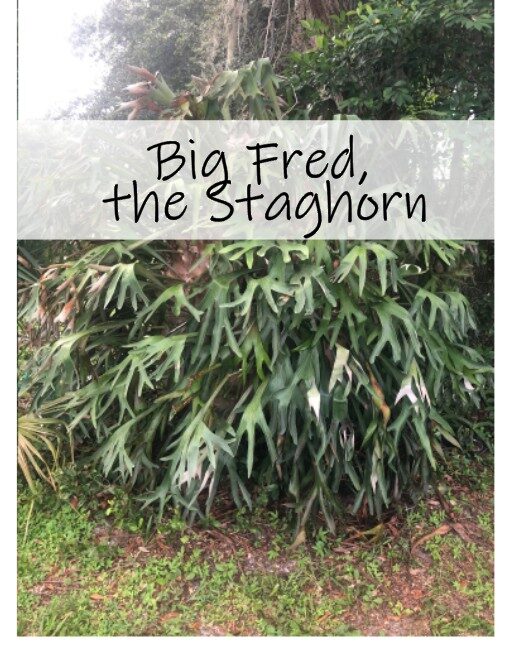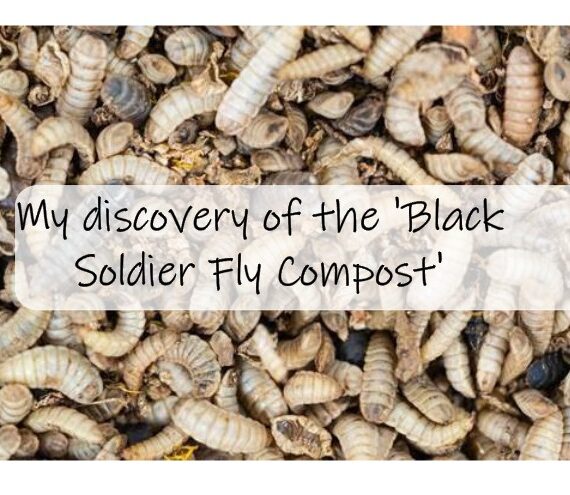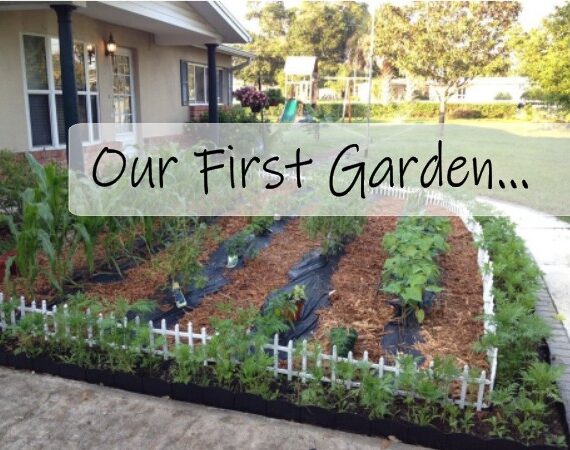In Florida, Staghorn ferns are very popular. They are beautiful ornamental plants that typically hang from large trees, and can grow to pretty amazing sizes. I have always loved these ferns, and had a couple at the last rental that we took care of. To my surprise, the house that we bought had the Granddaddy of all Staghorn – and it was in the stars that this Staghorn would be mine and have an even better story behind it.


So the previous owners of my house were pretty amazing people. They shared similar interests in gardening and planted a variety of plants which made my house and yard just the most perfect fit I could have ever imagined for my family. Anyway back to the fern – it turns out this wonderful beauty was grown from a pup…over 45 YEARS AGO! That’s right, you read that correctly. Forty- Five years ago. This beautiful plant is a full teenager older than I am. We knew this plant was more than just a ball of leaves, it was family. Just like every other one of our family members, it got a name. Big Fred. Named after it’s previous owner.
Big Fred is attached to an oak tree, completely hanging (only about 1 foot off the ground) and quite honestly – I have no idea how that tree is holding the weight. I am planning to lift it higher in the tree in hopes that it grows larger with some additional space from the ground. This plant is so large, I had to measure it!
He measures a total of:
88.5 inches in diameter (that’s almost 7.5 FEET!)
278 inches in circumference (That’s 23.16 feet around!)
Similar plants in size and age are going for around $3,000 online. Now although knowing the going price for such a majestic beauty is fun, Big Fred is completely priceless to us. We just started a plant nursery business (Propagate Happiness) and will be propagating Big Fred to make new baby Big Fred’s to spread the love around!
In fact, we already have two Baby Fred’s growing right now! They were propagated directly into these hanging baskets for a future sale, or if I can’t part with them (which is more likely), I have plenty of places to put them in my yard :). Look at all that new growth already!



Some Interesting Facts About Staghorn Ferns
- Staghorn ferns are epiphytes and do not grow in soil.
- Unofficial largest staghorn Fern in the world is about 10 feet wide, and about 6 feet tall. It resides in Melbourne Florida (Source)
- Staghorn ferns are members of the Polypodiaceae plant family, and belong to the genus Platycerium. Eighteen species are presently recognized along with many varieties and hybrids. (Source)
- Many people feed their Staghorn’s Bananas. Banana peels can contribute lots of potassium and a little phosphorus to the nutrient needs of your staghorn fern. But they contain very little nitrogen, which also is needed for good growth. (Source)
- Staghorn ferns earn their name from the resemblance to deer horns or antlers
- The plant produces two distinctly different fronds (i.e., leaves), (a) basal and (b) foliar. Basal fronds, often called “sterile fronds,” are rounded thickened fronds which grow in overlapping layers and clasp onto a growing surface. The upper parts of basal fronds may be lobed or divided and stand erect. This upright form efficiently collects water, fallen leaves, and plant debris. These products eventually break down, releasing nutrients necessary for growth. Foliar fronds, also called “fertile fronds,” are either erect or pendant and may be divided into lobed or strap-shaped divisions. Foliar fronds produce brownish reproductive structures (called sporangia) on the underside of their fronds. These sporangia hold spores that, when germinated, form new plants. (Source)





